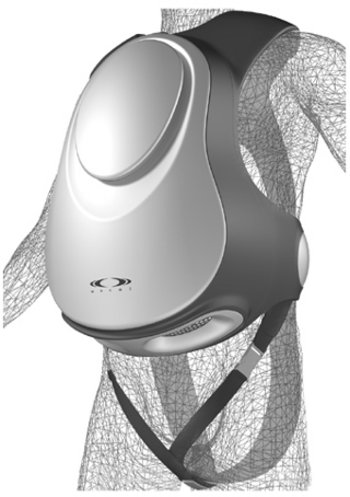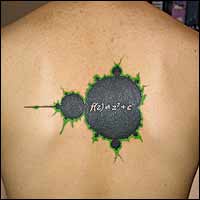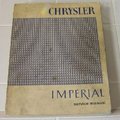July 30, 2004
Symbolics 3630 Auction
For sale on eBay: a Symbolics 3630. 4 days left. Sorry, Marc Stein! [via Jack Lunn.]
(Zach Beane posted a comment earlier about a Lisp Machine manuals auction, which still has two days left. Why not take home a nice set of manuals to go with your new lisp machine?)
The Riches of Others Makes You More Valuable
Another worry: Even though I know I probably shouldn't be concerned that O'Reilly explicitly states that they do not want to publish Lisp books, sometimes I am anyway.
We're NOT looking for:
- Any books on LISP, LaTeX, or Web-based training.
Ouch. Lumped in with LaTeX and web-based training.
OK, so O'Reilly doesn't want to publish Lisp books. Big deal, that's their choice, it's a matter of taste, etc. I just wonder what it is that led to their barring Lisp, the only programming language specifically mentioned by name. Did they just lose all patience after the 14th proposal from smug wannabe Lisp authors crossed their desk? Genera Hacks. CLIM in a Nutshell. Designing Lisp Applications That Are Already Inherently Better Than Applications Written in the Only Languages Their Puny Minds Can Comprehend.
Whatever the reason, it does make me a little sad.
July 29, 2004
No Future
jwz says “One can think in Lisp and still realize that actually writing programs in it has no future. (One sometimes cries.)”. [via Zach Beane].
I worry that he's right.
Entry Level (And Senior) Lisper(s) Needed at Merced
Merced Systems is looking for an entry level scheme/lisp software engineering position. “Merced Systems is looking for software engineers who are familiar with Scheme and are excited to be using Scheme in a product development environment.” Actually most of the development and testing positions they have listed include Lisp as a desirable skill. [via Gavin.] Update: Gavin discovered they need a senior developer, too.
Allegro Oracle Direct Connect and DOM Level 1 For ACL
Franz has released a new way to talk to Oracle databases for ACl 6.2 (and ACL 7.0 beta).
Allegro Oracle Direct Connect is a new Oracle database (version 8 and higher) interface available in Allegro CL. The API is similar to the Allegro ODBC interface (see aodbc.htm) and the Allegro MySQL Direct interface (see mysql.htm) but it is specialized for Oracle. To use the interface, you must have the Oracle C Interface libraries. An ODBC library is not necessary.
They've also added DOM Level 1 support.
As noted, Allegro CL supports the Core part of DOM only. This DOM Level 1 implementation passes 155 key tests from the W3.org DOM conformance test suite. These tests were translated from the javascript source.
July 28, 2004
Great Hackers
Paul Graham has posted “Great Hackers”, an essay based on his keynote at OSCON.
For example, if your company wants to write some software, it might seem a prudent choice to write it in Java. But when you choose a language, you're also choosing a community. The programmers you'll be able to hire to work on a Java project won't be as smart as the ones you could get to work on a project written in Python. [2] And the quality of your hackers probably matters more than the language you choose. Though, frankly, the fact that good hackers prefer Python to Java should tell you something about the relative merits of those languages.
[...]
So a company that found a way to get great hackers to work on tedious problems would be very successful. How would you do it?
One place this happens is in startups. At our startup we had Robert Morris working as a system administrator. That's like having the Rolling Stones play at a bar mitzvah. You can't hire that kind of talent. But people will do any amount of drudgery for companies of which they're the founders. [4]
[...]
So here is my best shot at a recipe. If it is possible to make yourself into a great hacker, the way to do it may be to make the following deal with yourself: you never have to work on boring projects (unless your family will starve otherwise), and in return, you'll never allow yourself to do a half-assed job. All the great hackers I know seem to have made that deal, though perhaps none of them had any choice in the matter.
July 27, 2004
Collaborative Conference Note-Taking
This is a SubEthaEdit template that was used at PyCon. Note-taking as an activity is something I find interesting, and a guide for doing so is kind of neat. When the guide is for multiple people simultaneously taking notes in a single shared document, then I get extra tingly. [via Ted Leung.]
P.S. When is one of our more ambitious emacs hackers going to write subethaedit.el?
TITLE OF PAPER: _name_of_the_paper_here_
URL OF PRESENTATION: _URL_of_powerpoint_presentation_
PRESENTED BY: _names_of_the_participants_
REPRESENTING: _name_of_the_company_they_represent_
CONFERENCE: _name_of_your_conference_here_
DATE: _date_of_your_conference_here_
LOCATION: _venue_and_room_in_venue_
--------------------------------------------------------------------------
REAL-TIME NOTES / ANNOTATIONS OF THE PAPER:
{If you've contributed, add your name, e-mail & URL at the bottom}
--------------------------------------------------------------------------
REFERENCES: {as documents / sites are referenced add them below}
--------------------------------------------------------------------------
QUOTES:
--------------------------------------------------------------------------
CONTRIBUTORS: {add your name, e-mail address and URL below}
--------------------------------------------------------------------------
E-MAIL BOUNCEBACK: {add your e-mail address separated by commas }
--------------------------------------------------------------------------
NOTES ON / KEY TO THIS TEMPLATE:
A headline (like a field in a database) will be CAPITALISED
This differentiates from the text that follows
A variable that you can change will be surrounded by _underscores_
Spaces in variables are also replaced with under_scores
This allows people to select the whole variable with a simple double-click
A tool-tip is lower case and surrounded by {curly brackets / parentheses}
These supply helpful contextual information.
--------------------------------------------------------------------------
Copyright shared between all the participants unless otherwise stated...
“LaneHawk” Press Release
Evolution has issued a press release related to the project I'm involved with right now: Evolution Robotics Announces LaneHawkTM Loss Prevention Solution to Combat Retail Fraud
I am now the man.
July 26, 2004
“Cumulus of Nerd Sweat”
I'm still recuperating from four days of the “premier pop culture festival in the United States”, Comic-Con. There may be other conventions at which you can find Catherine Bach, Lou Ferrigno and (in Patrick Farley's words) a thick “cumulus of nerd sweat” that periodically descended from the ceiling of the convention hall and choked us all, but this one is the premier convention.
July 21, 2004
Haible Haible
Bruno Haible has been going crazy over on Cliki with Proposed ANSI Revisions and Clarifications.
July 20, 2004
Grahamarama
You might be curious to see the original Viaweb (Webgen) white (gray) paper.
And Aaron Swartz has a positive review of Hackers & Painters.
Allegro Prolog
Franz has announced an implementation of Prolog for ACL [via Gordon Weakliem and Chris Double].
Allegro Prolog is an implementation of Prolog in Common Lisp. It is based on the implementation developed by Peter Norvig in Paradigms of Artificial Intelligence Programming. The code has been further optimized and useful extensions provided, making an industrial-strength Prolog programming environment with a flexible calling interface in both directions between Common Lisp and Prolog.
July 19, 2004
Quotarama
The collection of quotes from Paul Graham's Hackers & Painters on Bill Clementson's page convinced me to buy the book.
One valuable thing you tend to get only in startups is uninterruptability. Different kinds of work have different time quanta. Someone proofreading a manuscript could probably be interrupted every fifteen minutes with little loss of productivity. But the time quantum for hacking is very long: it might take an hour just to load a problem into your head. So the cost of having someone from personnel call you about a form you forgot to fill out can be huge. This is why hackers give you such a baleful stare as they turn from their screen to answer your question. Inside their heads a giant house of cards is tottering. The mere possibility of being interrupted deters hackers from starting hard projects. This is why they tend to work late at night, and why it's next to impossible to write great software in a cubicle (except late at night). One great advantage of startups is that they don't yet have any of the people who interrupt you. There is no personnel department, and thus no form nor anyone to call you about it.
Hackers Unchained
I like this Steve Wozniak quote, at the Hackers on Planet Earth get-together: “Looking around this room, you can tell we're not motivated by money, and that scares some people.” [via wmf.]
PCPlus
Jacques Siboni is looking for “the specifications or/and the scheme source code for Personal Consultant expert system shell from Texas Instruments”, which was discontinued years ago.
July 14, 2004
aFTPd 1.0.24
Ahmon Dancy of Franz announced a new release of their FTP server, aFTPd, with a minor bug fix
July 13, 2004
Some Minds, Maybe
“The Algorithms for Love” is a short story by Ken Liu, who claims to be “equally passionate about tax law and programming in Lisp.” [via Mike Hannemann.]
“The human body is a marvel to recreate. The human mind, on the other hand, is a joke. Believe me, I know.” If only this were true.
Lisp's Very Own JVM: JFLI
Rich Hickey's jfli embeds a JVM in Lispworks [via Bill Clementson].
jfli (“jay fly”) provides:
- Automatic function generation for constructors, fields and methods, either by named class, or entire package (sub)trees given a jar file.
- Java -> Lisp package and name mapping with an eye towards lack of surprise, lack of conflict, and useful editor completion.
- setf-able setter generation for fields as well as for methods that follow the JavaBeans property protocol.
- Java array creation and aref-like access to Java arrays.
- A 'new' macro that allows for keyword-style field and property initialization.
- Typed references to Java objects with an inheritance hierarchy on the Lisp side mirroring that on the Java side - allowing for Lisp methods specialized on Java class and interface types.
- Implementation of arbitrary Java interfaces in Lisp, and callbacks from Java to Lisp via those interfaces. (* this required a single 5-line dummy Java proxy stub, provided with jfli)
- Automatic lifetime maintenance of Lisp-referenced Java objects, boxing/unboxing of primitive args/returns, string conversions, Java exception handling, overload resolution etc.
Bill says
I tried the included demos and they worked fine. The SWT example was particularly interesting (although all it does is display a simple Java SWT dialog box with a button which, when pressed, calls back to LispWorks to get the version number of LispWorks). What interested me was the potential for using jfli together with SWT to develop native look-and-feel UI's.
July 12, 2004
CMUCL and Friends on Windows
Carl Shapiro is working on porting CMUCL to Windows [via Bill Clementson]:
For the past several weeks I have been working on a port of CMUCL to the Win32-family of operating systems. I have progressed to the point where CMUCL starts up and is able to perform simple interactive tasks.
While that's going on, Alastair Bridgewater is porting SBCL [again via Bill Clementson]:
The basic system appears to be working, getting through warm init. Serve-event isn't working, the filesystem stuff has been badly hacked, there's some downright weird memory corruption going on (so far only noticed in the Win32 heap tracking structures and in user32.dll), none of the contribs have even been tested, and there's that strangeness with the bad file descriptor for stdout on the normal win32 console.
July 10, 2004
Richard Feynman and The Connection Machine
It's been a while since I read something this interesting about Feynman. And it's by Danny Hillis.
July 09, 2004
IDEA 2004 Design Awards
A few winners from the 2004 Industrial Design Excellence Awards:

excel aquatic assistant for the disabled

infinity climber play structure
And I'm always kind of fascinated by the idea of sleek, good looking medical equipment.
S-XML, S-XML-RPC, CL-PREVALENCE
From Sven Van Caekenberghe:
Recently, I moved and renamed 3 of my open-source Common Lisp projects to common-lisp.net:
S-XML (http://common-lisp.net/project/s-xml) is a simple, basic XML parser for Common Lisp with both a pure functional, (S)SAX like event interface as well as a DOM interface with LXML, SXML and an XML-ELEMENT struct DOM representation. Rudi Schlatte and Brian Mastenbrook are co-developers/maintainers.
S-XML-RPC (http://common-lisp.net/project/s-xml-rpc) is an implementation of the XML-RPC protocol in Common Lisp for both client and server. Rudi Schlatte and Brian Mastenbrook are co-developers/maintainers and added porting to SBCL. Rudi Schlatte added a number of XML-RPC extensions recently.
CL-PREVALENCE (http://common-lisp.net/project/cl-prevalence) is an implementation in Common Lisp of the Object Prevalence concept using both XML and s-expression based serialization. Thanks to testing by Bill Clementson, ACL and Windows are now supported too.
All projects use ASDF and should be ASDF-INSTALL-able. As for all common-lisp.net projects, there is CVS access and there are mailing lists. All code runs on multiple CL implementations.
Brian's Lisp Weblog Engine

robot dogs having sex in 48 positions
Brian Mastenbrook's weblog is now powered by his own Lisp engine, and the source is available.
July 08, 2004
Hollywood Freaks
Looks like Tony Pierce hung out with the fat, drunk Spiderman and the Doc Ock on Hollywood Blvd right around the same time Lori and I did.
Apparently he missed the demon and the stormtrooper, though.
July 07, 2004
ILC 2002 Videos
Luke Gorrie commented to let us know that videos of the second day of ILC 2002 are available as bittorrents.
Unfortunately the audio quality isn't very good.
Mailman and AllegroServe
Nick Levine has a little bit of code that lets AllegroServe serve up the GNU Mailman mailing list manager web interface, thereby turning two lines of Apache configuration into 40 lines of Lisp.
July 06, 2004
Stormtroopers and DeLoreans
This weekend was just another 4th of July in LA. Meaning stormtroopers and DeLoreans, tits and tequila, BBQ ribs, beer, chicken, beer chicken and movies.
Lori has some of the photographic evidence.
iRobot's Bloodhound

iRobot seems to be working on a semi-autonomous medicbot for the military, as evidenced by this paper from the 23rd Army Science Conference: “Bloodhound: A Semi-Autonomous Battlefield Medical Robot”. [via engadget, whose paid authors should perhaps worry more about correcting basic grammatical errors than posting 40 times a day.]
In the future, medical robots like Bloodhound (Figure 1) will save soldiers and medics from this lethal dilemma. The Personal Status Monitors (PSMs) and smart uniforms being developed by the Army will detect when a soldier is wounded and notify a medic of the soldier’s GPS location. If the soldier is under fire, the medic will deploy a Bloodhound to that location. This robot will navigate autonomously to the soldier, carrying payloads for diagnosis and treatment. While the robot navigates to the soldier, the medic will be free to treat other casualties or dispatch robots to other locations.
When Bloodhound arrives at the casualty, it will alert the medic, and the medic will be able to perform a detailed examination of the casualty through the robot’s sensors. These sensors will include video cameras, twoway audio, an electronic stethoscope, and other diagnostic devices. The robot’s manipulator arm will allow the medic to position the sensors to best examine the casualty. After determining the extent of the casualty’s injuries, the medic will be able to treat these injuries using onboard medical payloads. In addition to allowing remote medical care, Bloodhound will reduce the load that a medic needs to carry, one of the key goals of Objective Force Warrior.
[...]
Using these guidelines, the following payloads have been selected as candidates for implementation in Phase II:
- Hemostasis payloads (fibrin bandages, liquid fibrin sealants, inflatable bandages)
- Auto-injectors (for morphine, epinephrine, and nerve agent antidotes)
- Electronic stethoscopes and other diagnostic devices
- Biological and chemical weapon sensors
Exploring the Army Science Conference site made me think of “How We Lost the High-Tech War of 2007”, from The Weekly Standard:
Because the Americans believed their information technologies reduced the need for conventional combat forces, they disbanded such forces in favor of trendy “information” units. These were filled not with well-trained, physically fit combatants, but rather, as Szafranski put it, “mind-nimble (not necessarily literate), fingertip-quick youth” who tended to equate their success at video games with competency to engage in real war. Thank The One Above, the easy capture of a few of these self-styled “digital warriors” yielded a treasure trove of intelligence data.
We found we could contend with the light, supposedly high-tech combat units that completed most of America's remaining battle forces
July 04, 2004
2002 ILC Proceedings
Luke Gorrie has posted the proceedings of the 2002 ILC.
170367 30 Jun 18:39 Andre-van-Meulebrouck.pdf
266954 30 Jun 18:39 Antonio-Leitao.pdf
966656 30 Jun 18:39 B-hayes-roth.ppt
24064 30 Jun 18:39 Cooper-Reed-Wallace-Yuasa.doc
2211328 30 Jun 18:39 Genesereth-lisp3.ppt
266372 30 Jun 18:39 Gilbert-Baumann.pdf
3727872 30 Jun 18:39 Hain-slides.ppt
5538 30 Jun 18:39 Henry Lieberman - Sharpening the Parentheses.htm
102 30 Jun 18:39 Henry Lieberman - Sharpening the Parentheses_files
143188 30 Jun 18:39 Kawai.pdf
27301 30 Jun 18:39 Klassner.pdf
272 30 Jun 18:39 Levine
5999 30 Jun 18:39 Lieberman-Lisp-Conf-Slides.h2o
42496 30 Jun 18:39 Loebner.doc
217256 30 Jun 18:39 Manuel-Chailloux.pdf
828050 30 Jun 18:39 Marco-Antoniotti.pdf
91727 30 Jun 18:39 Masayuki-Ida.pdf
207269 30 Jun 18:39 Matthias-hoelzl.pdf
186394 30 Jun 18:39 OLEG-Kiselyov.pdf
145408 30 Jun 18:39 Pedrazzini-presentation.ppt
1368088 30 Jun 18:39 Polani.pdf
468992 30 Jun 18:39 RettigSimp-stms.ppt
33751 30 Jun 18:39 Rice.pdf
259584 30 Jun 18:39 Seiji-Koide.doc
170 30 Jun 18:39 Van Waning
85336 30 Jun 18:39 andres-rodriguez.pdf
627200 30 Jun 18:39 antoniotti-Tutorial.ppt
3548672 30 Jun 18:39 corman-Multi-threaded-Lisp.ppt
47982 30 Jun 18:39 daniel-barlow.pdf
1209856 30 Jun 18:39 daughtrey-rsd.ppt
537088 30 Jun 18:39 doug-lenat.ppt
759296 30 Jun 18:39 finin.ppt
51200 30 Jun 18:39 gabrielfinal.doc
499200 30 Jun 18:39 greenblat-slides-proceedings.ppt
40448 30 Jun 18:39 greenblatproposal.doc
30125 30 Jun 18:39 gsharp-slides.pdf
2206720 30 Jun 18:39 hcohenpaper.doc
78336 30 Jun 18:39 jans-aasman.doc
65536 30 Jun 18:39 loebner.ppt
63488 30 Jun 18:39 mallery.ppt
309751 30 Jun 18:39 marc-battyani.pdf
207872 30 Jun 18:39 marc-luo-revised.ppt
173468 30 Jun 18:39 mario-latendresse.pdf
52970 30 Jun 18:39 mark-tarver.pdf
44544 30 Jun 18:39 norvigfinal.doc
32016 30 Jun 18:39 pedrazzini.pdf
39424 30 Jun 18:39 pittman.doc
32256 30 Jun 18:39 queinnec.doc
741376 30 Jun 18:39 riva-paper.ppt
674763 30 Jun 18:39 serranoslides.pdf
1645056 30 Jun 18:39 shah-franz-ilc.ppt
1134592 30 Jun 18:39 shrager-lisptalkgrey.ppt
1556992 30 Jun 18:39 shrobe.ppt
1359872 30 Jun 18:39 sideman.ppt
122153 30 Jun 18:39 slides.pdf
50688 30 Jun 18:39 stallmanfinal.doc
52224 30 Jun 18:39 stearns-living-languages1.doc
168418 30 Jun 18:39 sunil-mishra.pdf
254464 30 Jun 18:39 talcott.ppt
294335 30 Jun 18:39 tim-moore.pdf
145378 30 Jun 18:39 vladimir-Kulyukin.pdf
159976 30 Jun 18:39 wakita.pdf
128000 30 Jun 18:39 white-Part1.ppt
71168 30 Jun 18:39 white-Part2.ppt
7825920 30 Jun 18:39 zillmanformatted.ppt
Lemonodor is mirroring the tarball.
July 02, 2004
A Bookshelf of Distinction
Rainer Joswig: “The Symbolics manuals are really cool. Everybody should have a copy.”

















